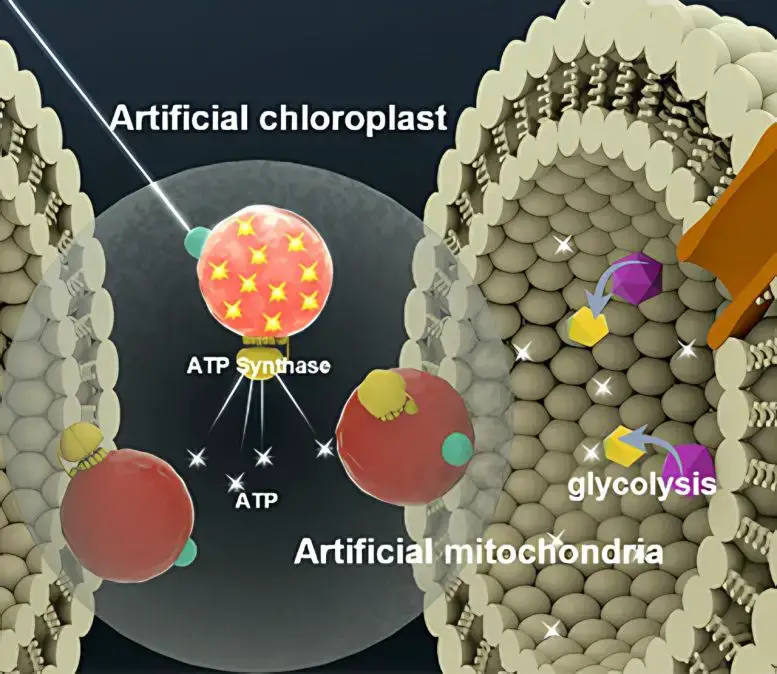- Feb 18, 2021
- 2,389
- 1,169
- Country
- United States
- Gender
- Male
- Faith
- Catholic
- Marital Status
- Married
- Politics
- US-Others

Concept of artificial chloroplasts and mitochondria within a liposome for self-sustaining energy generation through photosynthesis and cellular respiration.
Credit: Biological Interface Group, Sogang University
Assessing how energy-generating synthetic organelles could sustain artificial cells.
Researchers have assessed the progress and challenges in creating artificial mitochondria and chloroplasts for energy production in synthetic cells. These artificial organelles could potentially enable the development of new organisms or biomaterials. The researchers identified proteins as the most crucial components for molecular rotary machinery, proton transport, and ATP production, which serves as the cell’s primary energy currency.
Energy production in nature is the responsibility of chloroplasts and mitochondria and is crucial for fabricating sustainable, synthetic cells in the lab. Mitochondria are not only “the powerhouses of the cell,” as the middle school biology adage goes, but also one of the most complex intracellular components to replicate artificially.
In Biophysics Reviews, by AIP Publishing, researchers from Sogang University in South Korea and the Harbin Institute of Technology in China identified the most promising advancements and greatest challenges of artificial mitochondria and chloroplasts.
“This could be an important milestone in understanding the origin of life and the origin of cells.” — Kwanwoo Shin
“If scientists can create artificial mitochondria and chloroplasts, we could potentially develop synthetic cells that can generate energy and synthesize molecules autonomously. This would pave the way for the creation of entirely new organisms or biomaterials,” author Kwanwoo Shin said.
